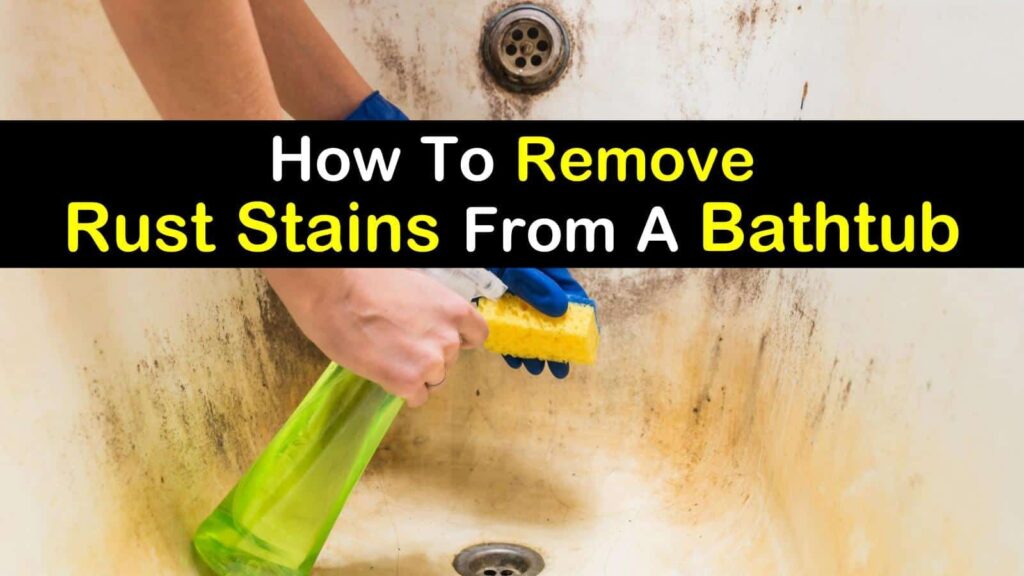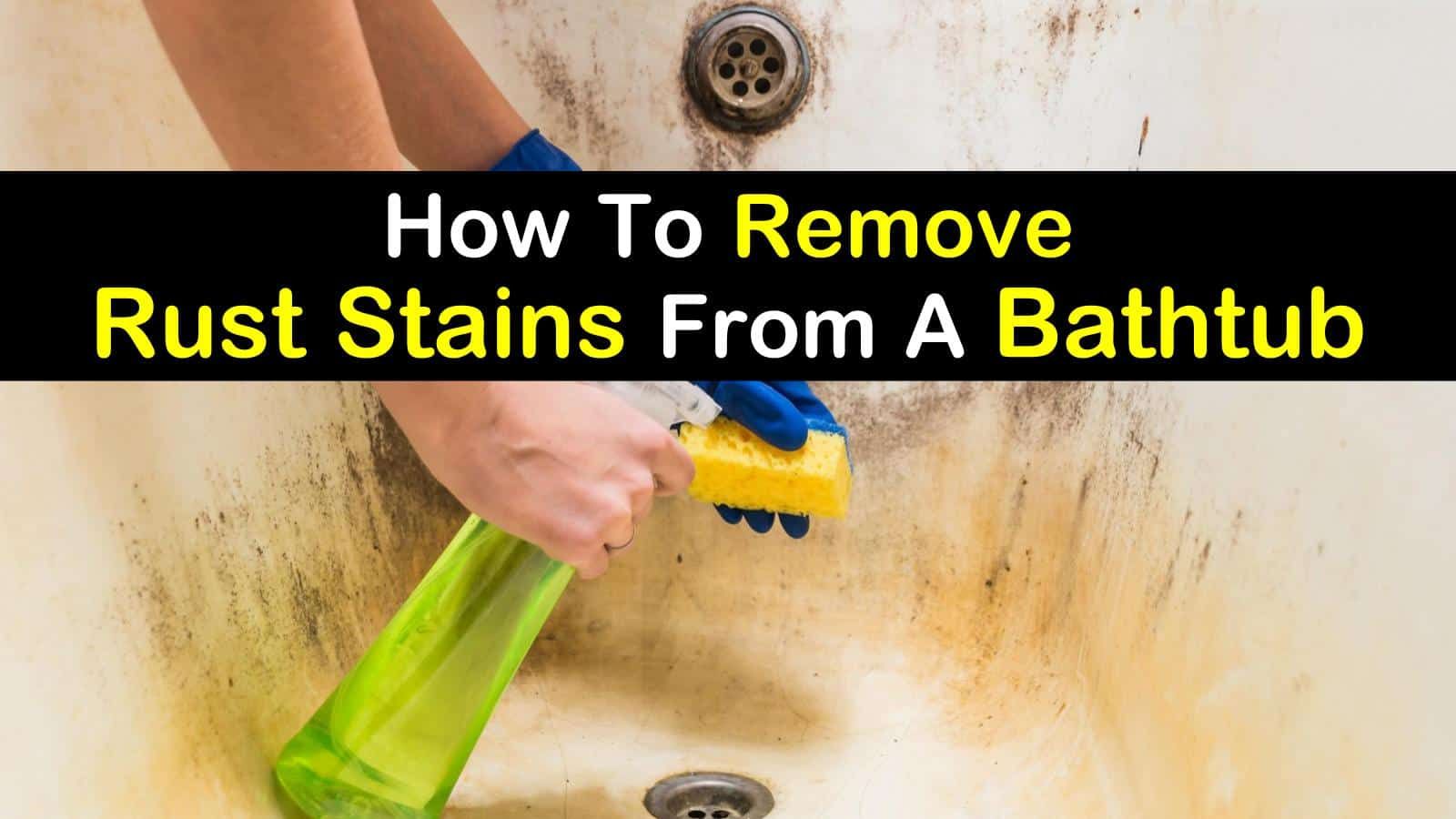
The Ultimate Guide to Bathroom Rust Remover: Eradicate Stains Effectively
Rust stains in the bathroom are a common and unsightly problem. From showerheads to tiles, rust can quickly diminish the cleanliness and appeal of your bathroom. Finding the right bathroom rust remover is essential for maintaining a pristine and hygienic space. This comprehensive guide will explore the causes of bathroom rust, various methods for removing it, and preventative measures to keep your bathroom rust-free. Understanding the nuances of bathroom rust remover options will empower you to tackle this issue effectively and efficiently.
Understanding Bathroom Rust
What Causes Rust in Bathrooms?
Rust is the result of iron oxidation, a chemical reaction that occurs when iron or iron alloys (like steel) are exposed to oxygen and moisture. In the bathroom, several factors contribute to rust formation:
- Water Exposure: Bathrooms are inherently damp environments. Constant exposure to water from showers, sinks, and toilets accelerates the rusting process.
- Iron Content in Water: Some water supplies contain high levels of iron. This iron can deposit on surfaces and, when combined with oxygen, forms rust.
- Metal Fixtures: Many bathroom fixtures, such as showerheads, faucets, and pipes, are made of metal that can rust over time.
- Cleaning Products: Certain cleaning products can corrode metal surfaces, making them more susceptible to rust.
Common Areas for Rust in Bathrooms
Rust tends to appear in specific areas of the bathroom where moisture and metal are frequently in contact:
- Showerheads and Faucets: Constant water flow and mineral deposits make these prime locations for rust.
- Tile Grout: Rust can seep into grout lines, creating stubborn stains.
- Metal Shelves and Racks: These are often exposed to moisture and can rust quickly.
- Toilet Bowls: Rust can form inside the toilet bowl due to iron in the water.
- Pipes: Exposed pipes are susceptible to rusting, especially in older homes.
Types of Bathroom Rust Remover
Choosing the right bathroom rust remover depends on the severity of the rust and the surface you’re cleaning. Here are some popular options:
Commercial Rust Removers
These are specifically formulated to dissolve rust and are available in various forms:
- Liquid Rust Removers: Ideal for soaking small items or applying to surfaces with a sponge or cloth.
- Gel Rust Removers: These cling to vertical surfaces, making them effective for shower walls and faucets.
- Spray Rust Removers: Easy to apply and suitable for larger areas.
When using commercial rust removers, always follow the manufacturer’s instructions and wear appropriate protective gear, such as gloves and eye protection. Many commercial bathroom rust removers contain harsh chemicals, so proper ventilation is crucial.
DIY Rust Removal Methods
For milder rust stains or those who prefer natural solutions, several DIY methods can be effective:
- Lemon Juice and Salt: The citric acid in lemon juice helps dissolve rust, while salt acts as a mild abrasive. Apply the mixture to the rust stain, let it sit for a few hours, and then scrub with a brush.
- Vinegar: Soak rusty items in white vinegar for several hours or overnight. For larger surfaces, apply vinegar with a cloth or sponge.
- Baking Soda Paste: Mix baking soda with water to form a paste. Apply the paste to the rust stain, let it dry, and then scrub with a brush.
- Potato and Dish Soap: Cut a potato in half, dip the cut end in dish soap, and scrub the rust stain. The oxalic acid in the potato helps dissolve rust.
DIY bathroom rust remover solutions are generally safer and more environmentally friendly than commercial products. However, they may require more effort and time to achieve the desired results.
Step-by-Step Guide to Removing Bathroom Rust
Follow these steps to effectively remove rust from your bathroom surfaces:
- Identify the Rust Stain: Determine the severity and location of the rust stain.
- Choose Your Rust Remover: Select a commercial or DIY bathroom rust remover based on your preferences and the stain’s severity.
- Prepare the Area: Protect surrounding surfaces with drop cloths or plastic sheeting. Ensure proper ventilation.
- Apply the Rust Remover: Follow the manufacturer’s instructions for commercial products. For DIY solutions, apply the mixture generously to the rust stain.
- Let It Sit: Allow the rust remover to sit for the recommended time. This allows the active ingredients to penetrate and dissolve the rust.
- Scrub the Stain: Use a brush, sponge, or abrasive pad to scrub the rust stain. For stubborn stains, you may need to repeat the process.
- Rinse Thoroughly: Rinse the area with clean water to remove any residue from the rust remover.
- Dry the Surface: Dry the surface with a clean cloth to prevent further rust formation.
- Inspect and Repeat: Check for any remaining rust. If necessary, repeat the process until the stain is completely removed.
Specific Rust Removal Techniques for Different Bathroom Surfaces
Removing Rust from Showerheads and Faucets
Showerheads and faucets are particularly prone to rust due to constant water exposure. Here’s how to tackle rust in these areas:
- Soaking Method: Remove the showerhead or faucet if possible and soak it in a commercial rust remover or vinegar overnight.
- Direct Application: For fixtures that can’t be removed, apply a gel rust remover or a paste of baking soda and water directly to the rust stain. Let it sit for several hours, then scrub and rinse.
- Toothbrush Scrubbing: Use an old toothbrush to scrub hard-to-reach areas around the showerhead and faucet.
Removing Rust from Tile Grout
Rust can seep into grout lines, creating unsightly stains. Here’s how to remove rust from tile grout:
- Baking Soda and Vinegar Paste: Mix baking soda and vinegar to form a paste. Apply the paste to the grout lines, let it fizz, and then scrub with a grout brush.
- Commercial Grout Cleaners: Use a commercial grout cleaner specifically designed to remove rust stains. Follow the manufacturer’s instructions carefully.
- Steam Cleaning: A steam cleaner can effectively loosen and remove rust from grout lines without the need for harsh chemicals.
Removing Rust from Toilet Bowls
Rust can form inside the toilet bowl due to iron in the water. Here’s how to remove rust from toilet bowls:
- Toilet Bowl Cleaner with Rust Remover: Use a toilet bowl cleaner specifically formulated to remove rust. Follow the instructions on the product label.
- Pumice Stone: Gently rub a pumice stone on the rust stain to remove it. Be careful not to scratch the porcelain.
- Vinegar and Baking Soda: Pour a cup of vinegar into the toilet bowl, followed by a cup of baking soda. Let it fizz for 30 minutes, then scrub and flush.
Preventing Rust in the Bathroom
Prevention is key to keeping your bathroom rust-free. Here are some tips to prevent rust formation:
- Keep Surfaces Dry: Wipe down surfaces after each use to prevent water from lingering.
- Improve Ventilation: Use the bathroom fan during and after showers to reduce humidity.
- Install a Water Softener: If your water supply has high iron content, consider installing a water softener to remove excess minerals.
- Use Rust-Resistant Fixtures: When replacing bathroom fixtures, choose rust-resistant materials like stainless steel or chrome.
- Apply Protective Coatings: Use rust-inhibiting sprays or coatings on metal surfaces to prevent rust formation.
- Regular Cleaning: Clean your bathroom regularly to remove mineral deposits and prevent rust from forming.
Choosing the Right Products: A Buyer’s Guide
Selecting the best bathroom rust remover can be overwhelming with so many options available. Consider these factors when making your choice:
- Type of Rust Stain: Determine the severity and type of rust stain. Light stains may respond well to DIY solutions, while severe stains may require commercial products.
- Surface Material: Consider the surface you’re cleaning. Some rust removers can damage certain materials, such as delicate tiles or painted surfaces.
- Ingredients: Check the ingredients list for harsh chemicals. If you prefer natural solutions, opt for DIY methods or commercial products with natural ingredients.
- Ease of Use: Choose a rust remover that is easy to apply and use. Sprays and gels are often more convenient than liquids for vertical surfaces.
- Safety: Always prioritize safety. Wear protective gear and ensure proper ventilation when using commercial rust removers.
- Reviews: Read online reviews to get insights from other users about the effectiveness and safety of the product.
The Environmental Impact of Rust Removers
Many commercial bathroom rust removers contain harsh chemicals that can be harmful to the environment. Consider the environmental impact of your choice and opt for eco-friendly alternatives whenever possible.
- Natural Solutions: DIY rust removal methods using lemon juice, vinegar, and baking soda are generally safer for the environment.
- Biodegradable Products: Look for commercial rust removers that are biodegradable and free from harsh chemicals.
- Proper Disposal: Dispose of used rust removers and cleaning materials properly according to local regulations.
Conclusion: Maintaining a Rust-Free Bathroom
Rust in the bathroom can be a persistent problem, but with the right knowledge and tools, it’s entirely manageable. By understanding the causes of rust, choosing the appropriate bathroom rust remover, and implementing preventative measures, you can maintain a clean and rust-free bathroom. Whether you opt for commercial products or DIY solutions, consistency and attention to detail are key to achieving long-lasting results. Remember to prioritize safety and environmental responsibility in your rust removal efforts. A proactive approach to rust prevention and removal will not only enhance the appearance of your bathroom but also contribute to a healthier and more hygienic living environment.
[See also: How to Clean Bathroom Tiles]
[See also: Best Bathroom Cleaning Products]
[See also: Preventing Mold in Your Bathroom]

